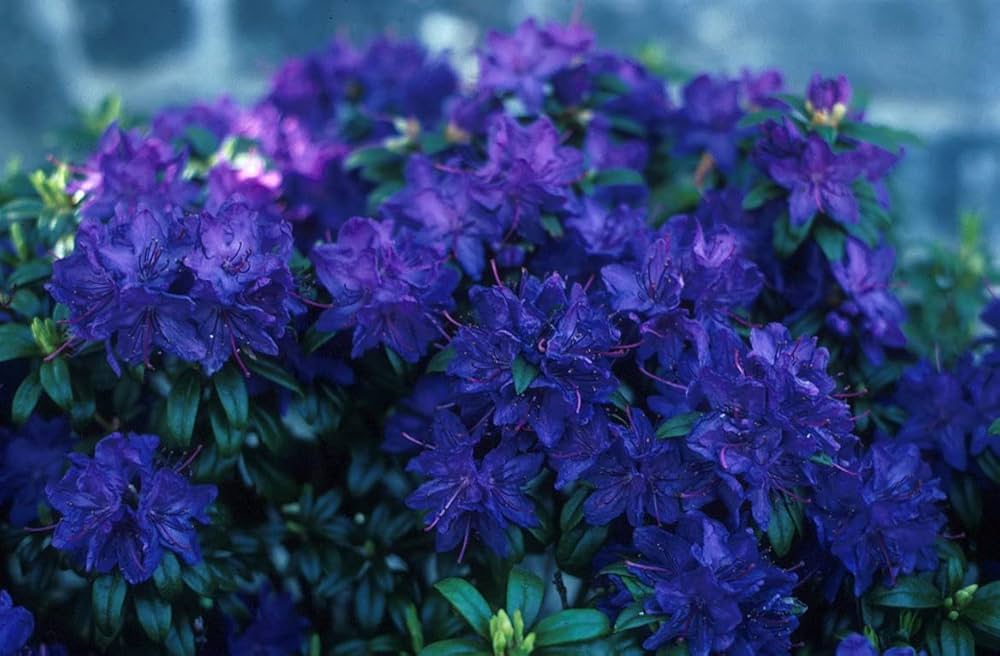Japanese Azalea Rhododendron Flower Seeds for Home and Garden Planting
Couldn't load pickup availability
Description
Azalea Seeds
Characteristics and Uses of Azalea Plants
Azaleas are renowned for their breathtaking floral displays, featuring clusters of vibrant blossoms in shades of pink, red, white, purple, and orange. These ornamental shrubs are cherished for their lush foliage and long-lasting blooms, making them a favorite for gardens, borders, and landscaping. Azaleas thrive in both container gardens and naturalized woodland settings, adding elegance to any space. bijaseeds, a big, trusted name in the USA seed market with a vast, high-quality selection, offers premium azalea seeds to help gardeners cultivate these exquisite plants.
Growing Conditions for Azalea Plants
- Light Requirements: Azaleas prefer partial shade, with morning sun and afternoon shade being ideal.
- Soil Preferences: Acidic, well-draining soil with a pH between 4.5 and 6.0 is necessary for optimal growth.
- Temperature Range: Best grown in moderate climates with temperatures between 50°F and 75°F, as extreme heat or frost can be damaging.
Planting Tips for Azaleas
- Seed Preparation: Cold stratification for 4-6 weeks improves germination rates.
- Sowing Depth: Sprinkle seeds lightly on the soil surface without covering them, as they require light for germination.
- Spacing: Maintain at least 12 inches between seedlings to allow proper air circulation.
Watering Instructions and Tips
- Initial Watering: Keep the soil consistently moist during germination, which takes 4-8 weeks.
- Ongoing Care: Water deeply once or twice a week, ensuring the soil stays moist but not waterlogged.
- Mulching: Apply a layer of organic mulch to retain moisture and regulate soil temperature.
Growing Zones
- USDA Zones: Azaleas thrive in zones 6-9, where winters are mild and summers are not excessively hot.
- Global Zones: Suitable for temperate and subtropical regions with adequate moisture and shade.
Key Benefits & Uses
- Ornamental Beauty: Azaleas provide stunning floral displays, making them a prized choice for landscapes.
- Wildlife Attraction: Their nectar-rich flowers attract pollinators such as bees and butterflies.
- Shade Tolerance: These plants thrive in partially shaded areas, making them ideal for woodland gardens.
Best Uses in the Garden & Landscape
- Foundation Plantings: Azaleas create striking visual appeal when planted along walkways and home exteriors.
- Hedge and Border Plants: Their dense foliage makes them excellent for forming natural hedges.
- Container Gardening: Compact azalea varieties thrive in pots, adding elegance to patios and balconies.
Conclusion
Growing azaleas from seed is a fulfilling process that allows gardeners to cultivate their own vibrant, flowering shrubs. With proper care, these plants will bloom season after season, enhancing landscapes with their colorful blossoms. bijaseeds, a big, trusted name in the seed world, offering a wide range of high-quality, non-GMO varieties to gardeners everywhere, ensures you have access to the best azalea seeds for your garden.
FAQ
How long does it take for azalea seeds to germinate?
Azalea seeds typically germinate within to 8 weeks, depending on temperature and moisture conditions. Keeping the soil consistently moist and warm will aid germination.
What is the best season to plant azalea seeds?
The best time to plant azalea seeds is in late winter to early spring when temperatures are mild and daylight hours are increasing.
Do azaleas require special soil conditions?
Yes, azaleas prefer acidic soil with a pH between 4.5 and 6.0. Amending the soil with peat moss, pine needles, or compost can help maintain the ideal conditions for healthy growth.







